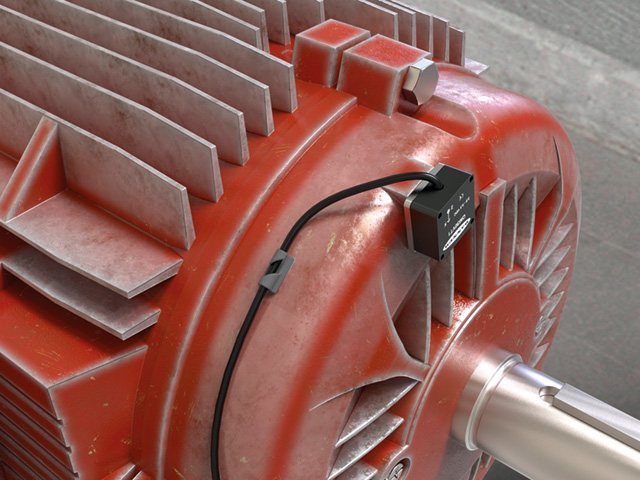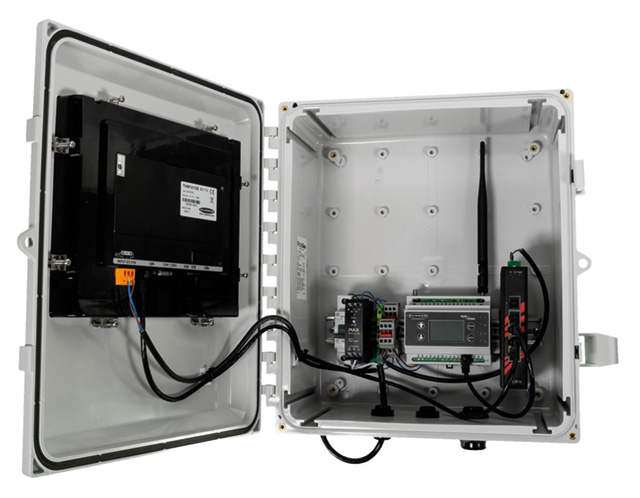
Paul Considine, UK Sales Director of Turck Banner, explains how condition monitoring has shed its reputation for high cost and complexity and is now a viable option for even small and medium sized companies.
What is condition monitoring and why do I need it?
Condition monitoring uses sensors to monitor equipment and give an early warning of failure. This dramatically reduces costs by allowing planned maintenance instead of catastrophic failure and production loss.
Often vibration and temperature monitoring is seen as too expensive or too complex for small to medium businesses. This frequently results in the responsibility being passed to maintenance personnel who during the course of their usual activities, will touch motors to feel if they are running hotter or vibrating more than (they remember from) the last time they touched it. While this has little cost involved it’s also not very effective.
In order to bring effective, 24/7 condition monitoring to all sizes of business Turck Banner have introduced a self-contained, preprogrammed, starter kit for vibration and temperature monitoring at less than £600.
The kit is designed for the first-time user with everything included to monitor one motor and receive warnings before failure. However as it uses the same controller as their large condition monitoring systems there is no compromise in performance, or the capabilities to expand into a large scale monitoring system integrating in to existing local and cloud networks.
The IP67 control module does not require a cabinet and connects wirelessly to the sensor, which is easily mounted on a motor, pump or fan, with the magnetic mounting bracket included in the kit.
Once connected, the controller monitors the running vibration and temperature of the motor and sets a baseline operating range. From this baseline the controller intelligently establishes warning and alarm alert levels for this motor. The current motor condition is displayed on a web interface as a Green, Amber or Red icon, with all the historical data shown at the touch of the icon. The web interface allows remote condition display from any browser on any smart phone, tablet or PC. When this is combined with text alerts, maintenance personnel have instant access to the condition monitoring system whenever they need it.
In this configuration the only other thing required is a data sim, nothing more to do, nothing else to pay.

The starter kit has numerous expansion possibilities. Up to 40 wireless sensors can be connected to a single starter kit, the controller is preprogrammed for the 40 sensors.
The customer is not locked into the preprogrammed cloud configuration. At any time, the controller can be connected to local networks, SCADA, PLCs or other cloud systems. This allows external data gathering, analysis, and integration into existing systems, such as DCS or CMS.
A monophase current monitoring sensor, which Indicates winding failures, stator faults, rotor bar or end ring faults, curved shafts, overload conditions, is also available to compliment the vibration and temperature sensors.
A solution Kit is also available which comprises, the wireless controller, touch screen HMI, power supply and interface in a wall mountable enclosure. This is also preprogrammed like the starter kit and is ideal for users wanting local visualisation and analysis.
You would think that monitoring rotating devices to enable scheduled maintenance, avoiding the cost and inconvenience of unplanned down-time, would be an easy thing to sell, especially as it usually pays for itself with the first motor failure.
However, the thought of vibration algorithms, processing systems and integration into existing wiring is enough to put anyone off. This new starter kit from Turck Banner removes all the concerns users may have before embarking on the condition monitoring route. The simplicity of the system truly makes condition monitoring as simple as a check engine light.
www.turckbanner.co.uk |
joni.mcdonough@turckbanner.com | t: 01268 578888

